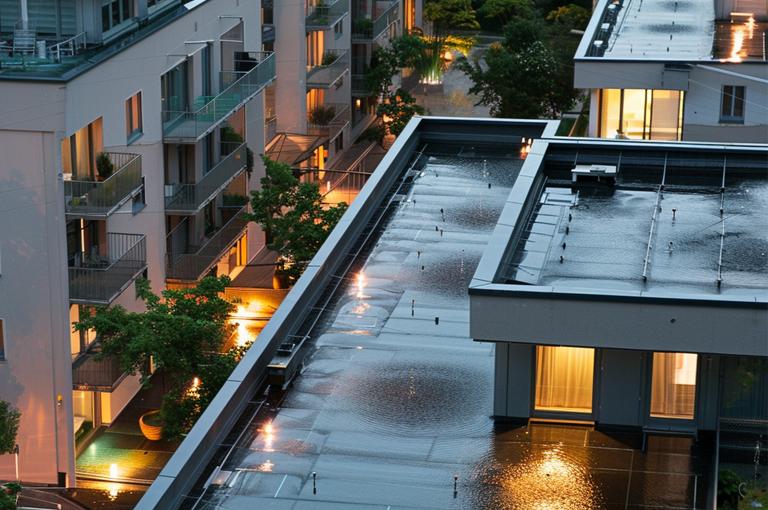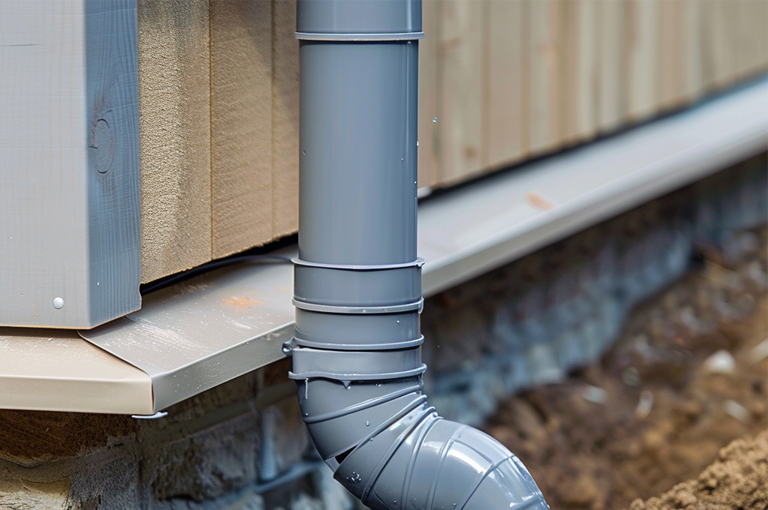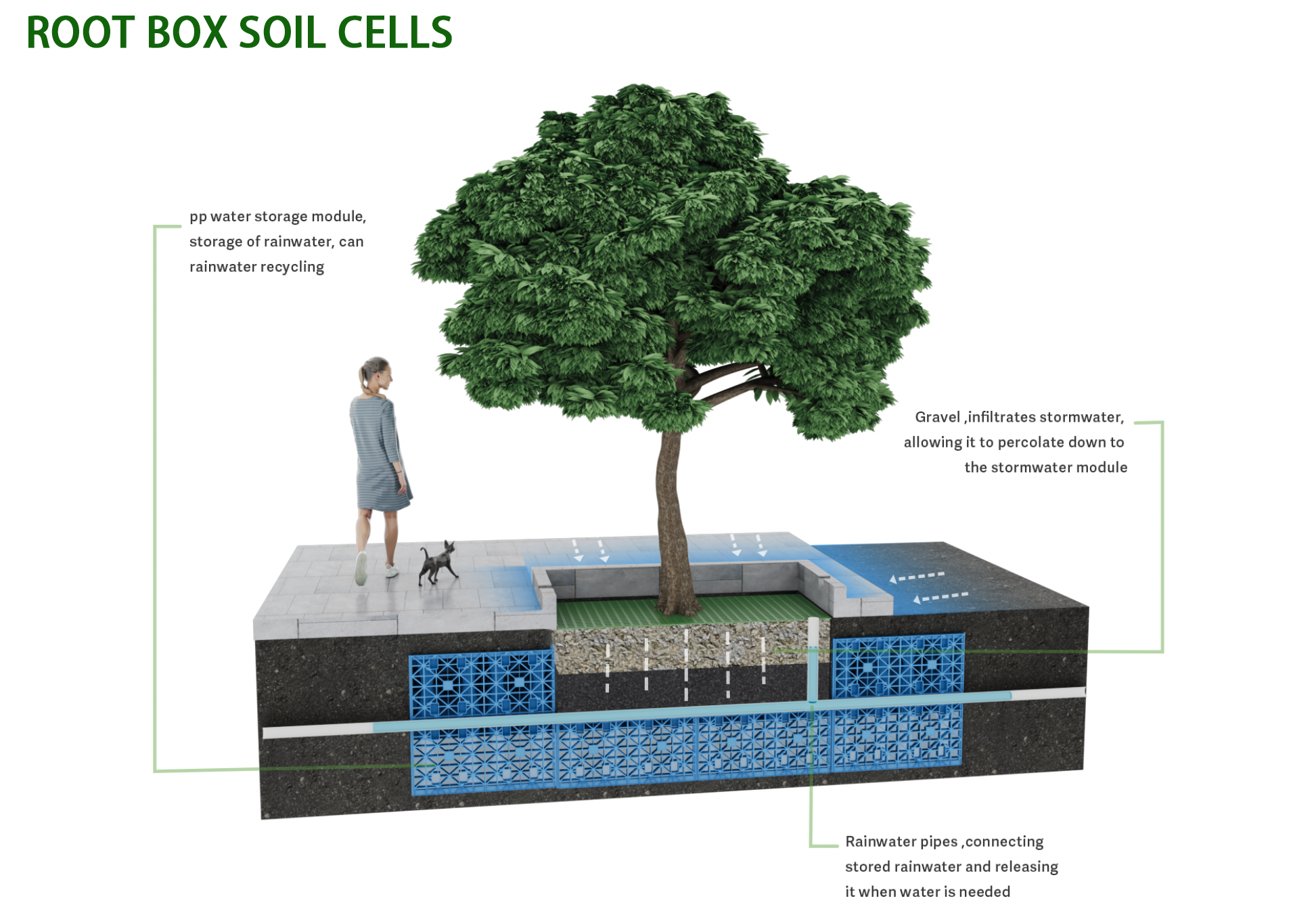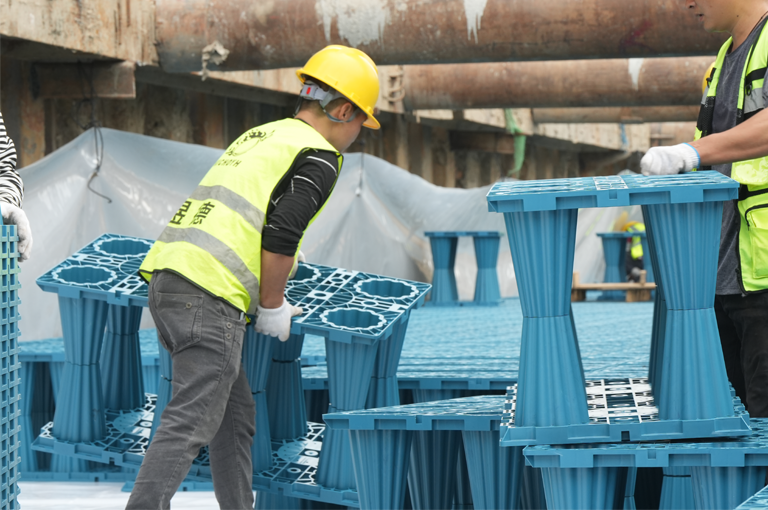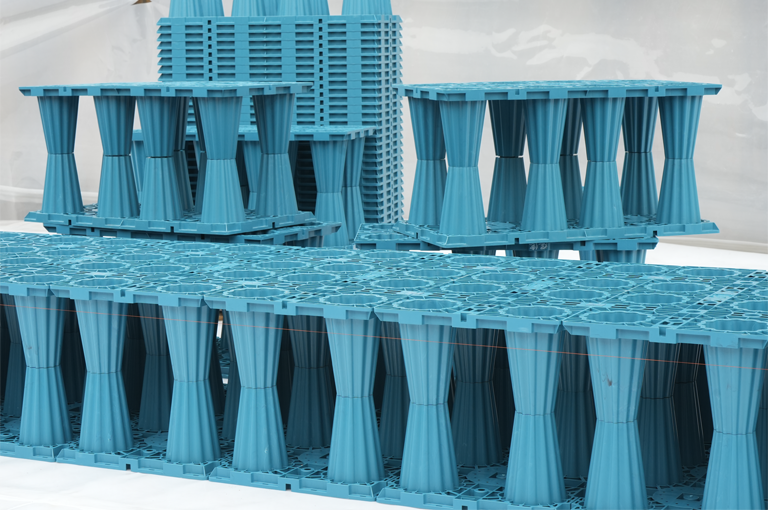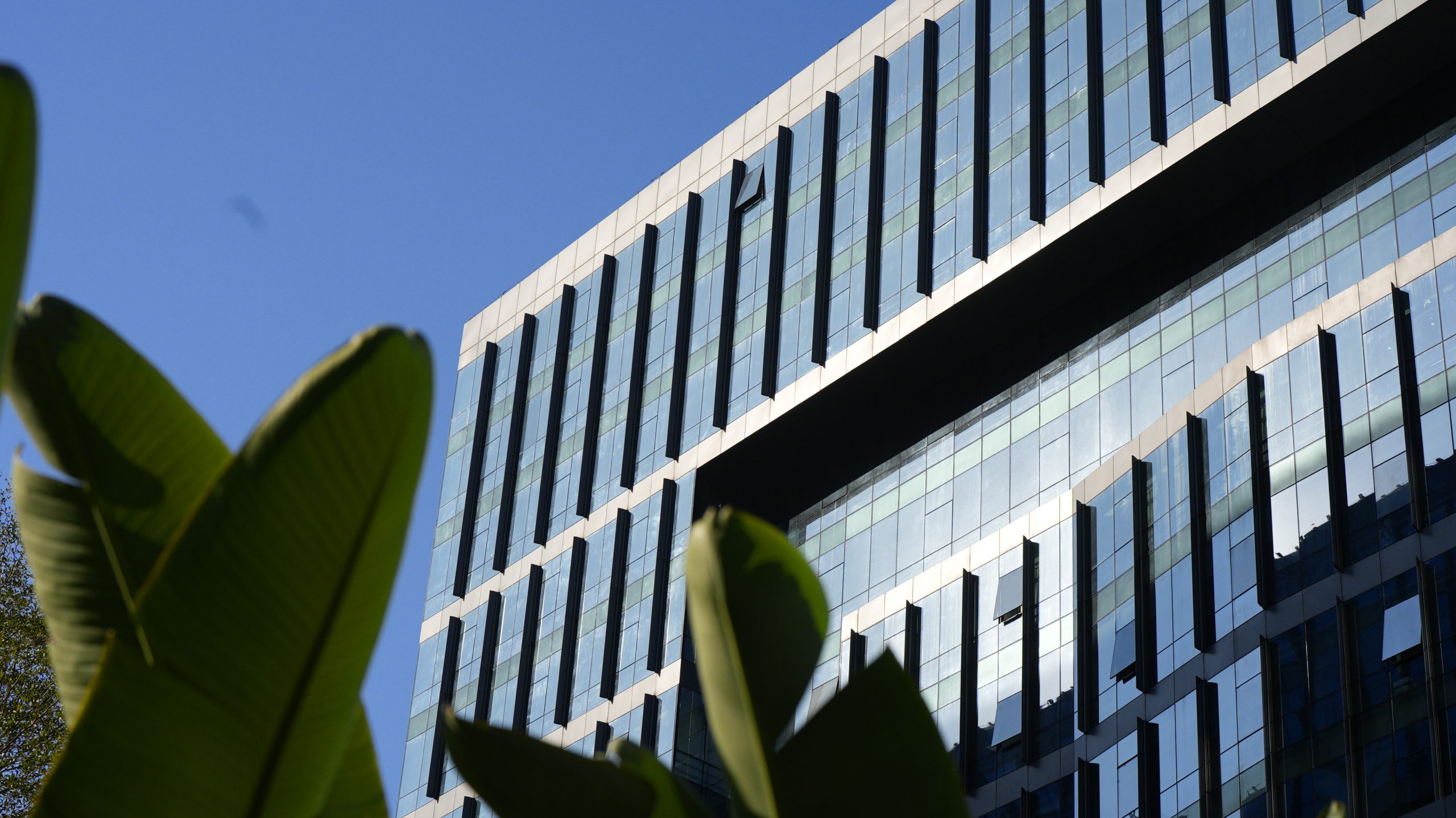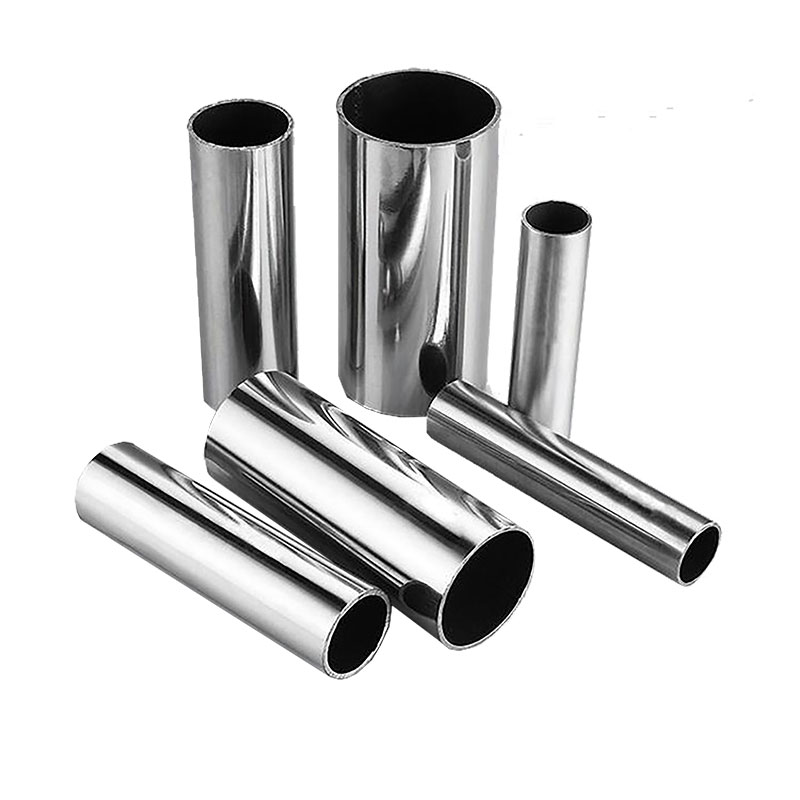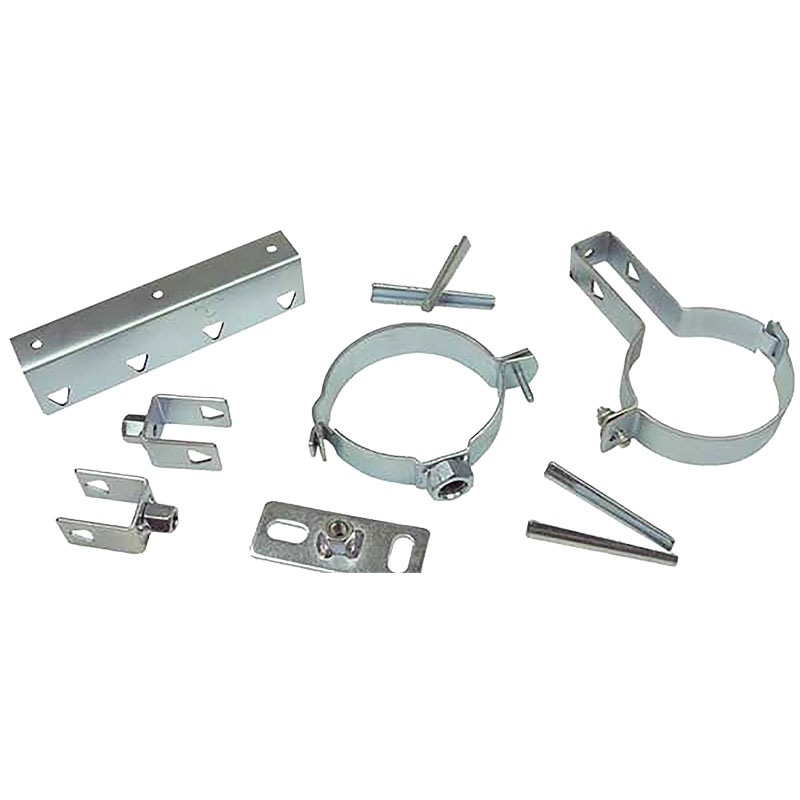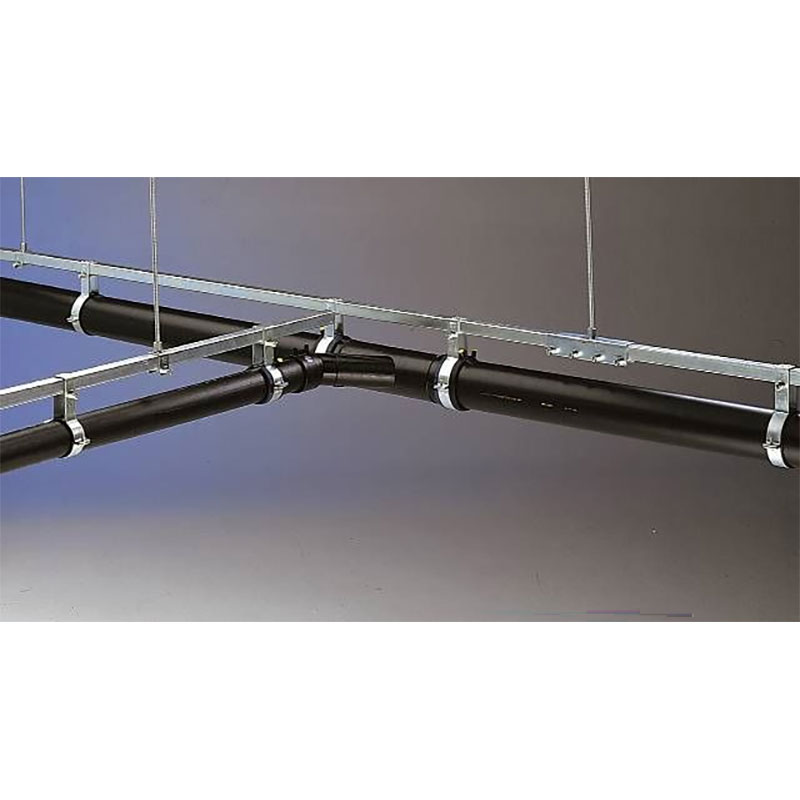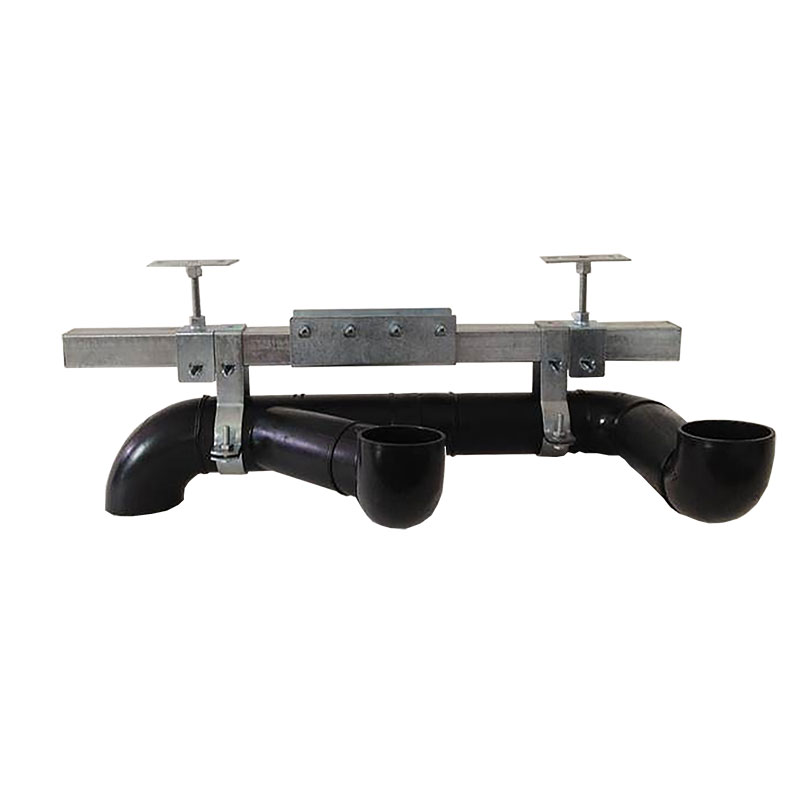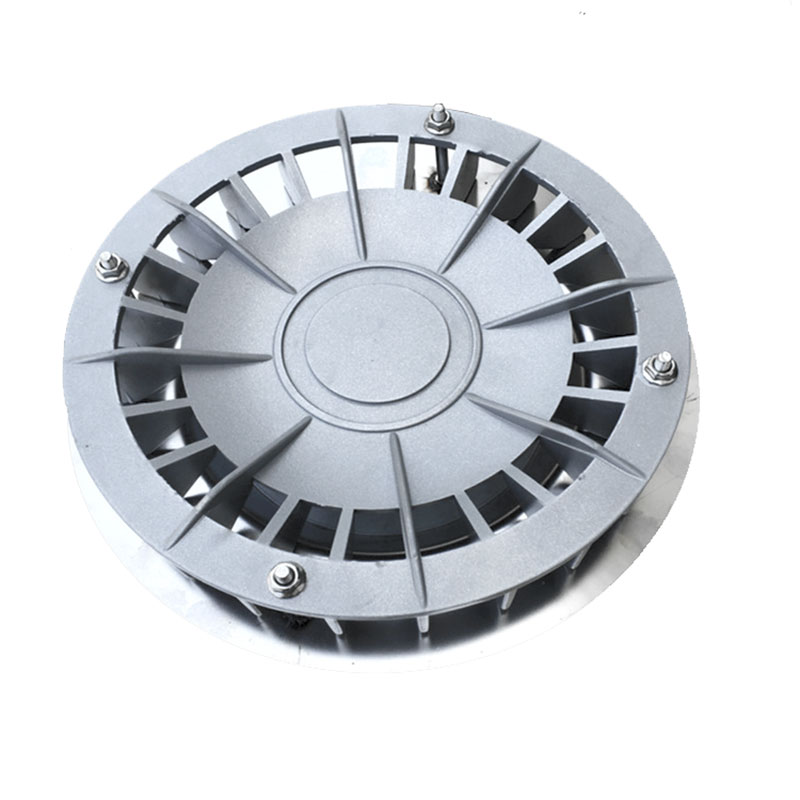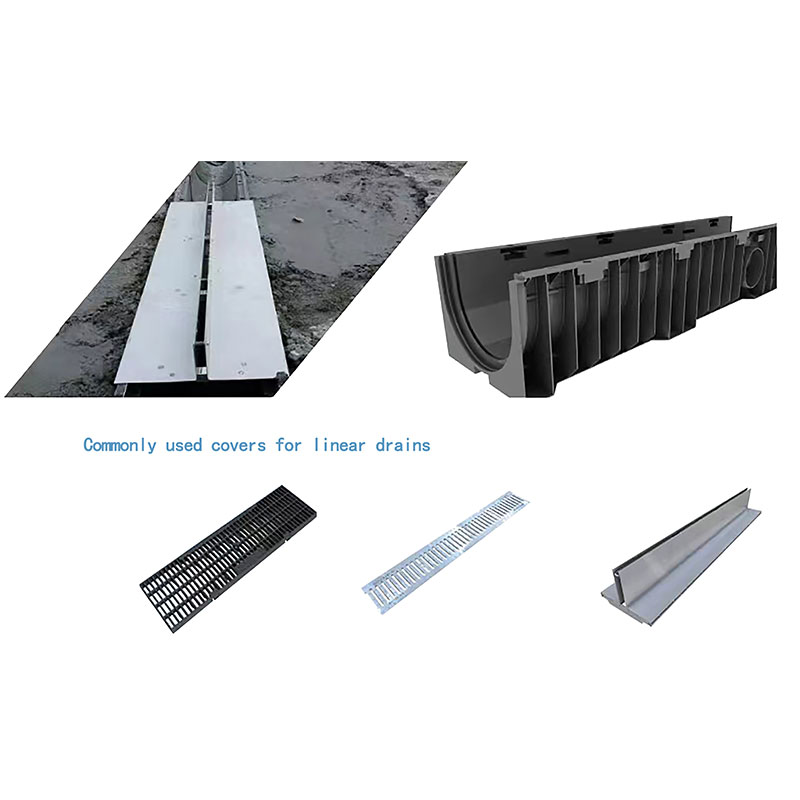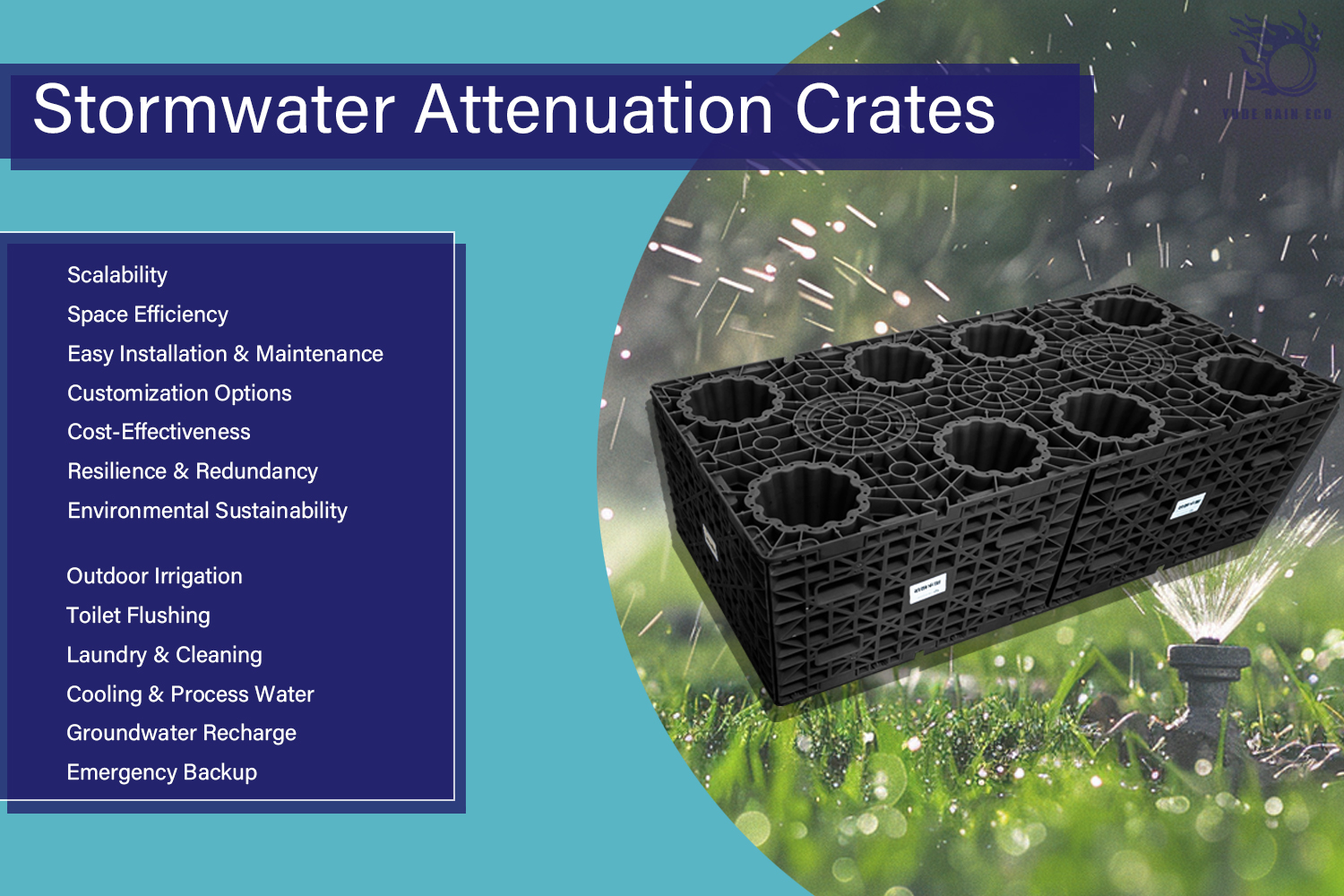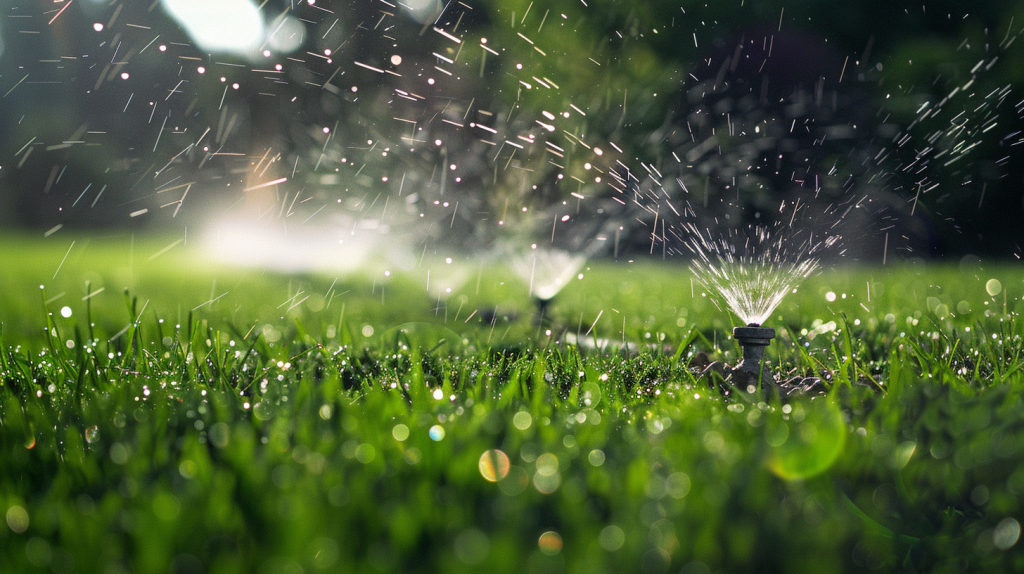The Importance of Roof Drainage
Introduction
Roof drainage is essential for any building’s infrastructure, effectively managing rainwater from the roof to the ground. Proper drainage systems protect the building’s structural integrity and ensure the safety and comfort of its occupants.
- Structural Protection
An efficient roof drainage system is crucial for structural protection. Without proper drainage, water accumulation on the roof can lead to leaks and significant structural issues such as:
Roof Deterioration: Standing water accelerates the deterioration of materials like shingles, tiles, or membranes, resulting in costly repairs or replacements.
Foundation Damage: Improper water diversion can cause water to seep into the foundation, leading to cracks, erosion, and potential structural failure.
- Preventing Water Damage
Proper roof drainage prevents various types of water damage, including:
Mold and Mildew: Moisture infiltration fosters mold and mildew growth, posing health risks.
Interior Damage: Leaks can damage ceilings, walls, and floors, leading to expensive repairs and property loss.
- Enhancing Safety
Effective roof drainage enhances safety by:
Preventing Ice Dams: In colder climates, it helps prevent ice dams, which can damage roofs and gutters.
Reducing Slip Hazards: Proper drainage prevents water accumulation on surfaces around the building, reducing slip and fall risks.
- Environmental Benefits
Roof drainage systems offer environmental benefits, including:
Reducing Soil Erosion: Proper rainwater management reduces soil erosion, preserving landscaping and preventing sediment from entering waterways.
Harvesting Rainwater: Advanced drainage systems can integrate with rainwater harvesting systems, allowing water collection for irrigation and non-potable uses.
- Urban Infrastructure
In urban areas, roof drainage systems are vital for managing stormwater runoff, reducing flooding risks, and minimizing the strain on municipal drainage systems, particularly in densely populated areas.
- Compliance with Building Codes
Adhering to building codes and regulations by installing proper roof drainage systems ensures buildings are safe, habitable, and compliant with legal requirements, avoiding potential fines and legal issues.
Why Do You Need a Siphon Drainage System? Overview and Uses
Introduction
A siphon drainage system efficiently manages rainwater and wastewater by using negative pressure to create a self-priming siphon effect for rapid water removal.
- How Siphon Drainage Systems Work
Siphon drainage operates on differential pressure principles. Rainwater fills the pipes, creating a vacuum that generates high flow velocity, moving large water volumes quickly. Key components include:
Inlet Structures: Collect rainwater from roofs or surfaces.
Siphonic Pipes: Designed to create the siphoning effect.
Downpipes: Transport water from siphonic pipes to the ground or storage systems.
Outlet Structures: Discharge water into appropriate drainage systems or storage facilities.
- Uses of Siphon Drainage Systems
Siphon drainage systems are versatile and efficient, used in various applications:
Roof Drainage: Ideal for large, flat roofs in commercial, industrial, and public buildings.
Urban Infrastructure: Manage stormwater runoff, reducing flooding risks and easing municipal drainage burdens.
Rainwater Harvesting: Integrate with systems for collecting and reusing rainwater.
Landscape and Agricultural Drainage: Manage surface water, prevent waterlogging, and maintain soil moisture levels.
- Advantages of Siphon Drainage Systems
Benefits include:
High Efficiency: Rapid water removal reduces accumulation and damage risks.
Space Saving: Fewer pipes and smaller diameters save space and materials.
Cost-Effective: Lower material and installation costs.
Flexibility: Adaptable to various building designs and layouts.
Environmental Benefits: Effective stormwater management supports sustainable development.
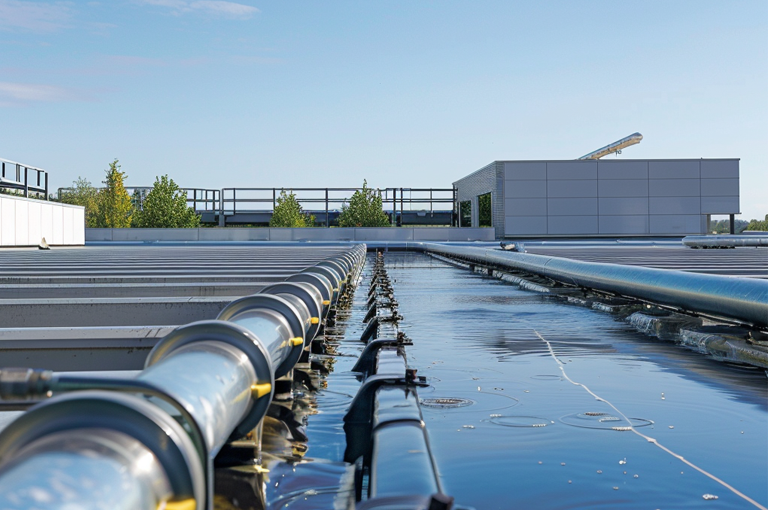
Application of Yude Rain Eco’s Siphon Drainage System
A. Large Commercial and Industrial Buildings
Reliable for managing significant rainwater volumes, preventing water accumulation and damage.
B. Flat and Low-Sloped Roofs
Effective water removal for buildings with susceptible roof designs.
C. Urban Developments
Crucial for stormwater management in densely populated areas, enhancing urban sustainability and resilience.
Stormwater Attenuation Crates: Role and Application
Introduction
Stormwater attenuation crates temporarily store and control the release of rainwater, mitigating flooding and supporting sustainable urban development.
- What is a Stormwater Attenuation Crates?
These crates temporarily hold rainwater during heavy rainfall, managing its release to prevent drainage system overwhelm and reduce flooding risks.
- Role of Stormwater Attenuation Crates
Flood Mitigation: Manages stormwater volume and flow rate, preventing drainage system surges.
Reducing Pressure on Drainage Systems: Controls stormwater flow, crucial in urban areas with impervious surfaces.
Supporting Sustainable Development: Efficient water resource management reduces environmental impact and promotes infrastructure resilience.
- Applications of Stormwater Attenuation Crates
Urban Infrastructure: Manage stormwater runoff from impervious surfaces, integrated with green infrastructure.
Commercial and Industrial Sites: Ensure compliance and prevent operational disruptions.
Residential Developments: Reduce localized flooding risks and support sustainable water management.
Landscape and Agricultural Management: Prevent soil erosion and waterlogging.
The Role and Benefits of Combining Stormwater Attenuation Crates and Siphon Drainage
Introduction
Combining stormwater attenuation crates with siphon drainage systems creates a highly efficient stormwater management solution, leveraging both systems’ strengths.
- Role of Combining Stormwater Attenuation Crates and Siphon Drainage System
Efficient Stormwater Collection and Storage: Siphon systems rapidly collect rainwater, channeled into attenuation crates for storage and controlled release.
Comprehensive Flood Mitigation: Efficient collection and managed release mitigate flooding risks.
- Benefits of the Combined System
Enhanced Efficiency: Maximizes stormwater management efficiency.
Enhanced Urban Resilience: Reduces municipal drainage burdens and minimizes urban flooding risks.
Support for Sustainable Development: Promotes sustainable water management and reduces environmental impact.
- Specific Applications
Commercial and Industrial Buildings: Manages substantial stormwater volumes, protecting assets and operations.
Residential Developments: Provides reliable stormwater management, protecting homes and supporting sustainable living.
Urban Infrastructure Projects: Essential for managing runoff, enhancing urban resilience and sustainable planning.
Q&A:Uses of Collected Rainwater: Potability and Reuse

1. Uses of Collected Rainwater?
A. Non-Potable Uses
Most commonly, collected rainwater is used for non-potable purposes.
Irrigation: Watering gardens, lawns, and agricultural fields.
Toilet Flushing: Reducing the demand on municipal water supplies.
Cleaning: Washing vehicles, outdoor surfaces, and windows.
Laundry: Using rainwater in washing machines.
Fire Suppression: Providing a water source for firefighting systems.
Cooling Systems: Using rainwater in industrial cooling processes.
Filling Ponds and Pools: Providing water for aesthetic and recreational purposes.
B. Is It Potable Uses?
For rainwater to be used for drinking (potable use), it must undergo appropriate treatment to meet safety standards. Treated rainwater can be used for:
Drinking Water: Providing a clean, safe water source.
Cooking: Preparing food safely.
Bathing and Showering: Ensuring safe personal hygiene.
2. Factors Affecting Potability?
Several factors influence whether collected rainwater can be made potable:
Collection Method: Cleanliness of the catchment area (e.g., roofs), gutters, and storage tanks.
Contaminants: Presence of pollutants, debris, bird droppings, and other contaminants.
Storage Conditions: Ensuring the tank is covered and protected from contamination.
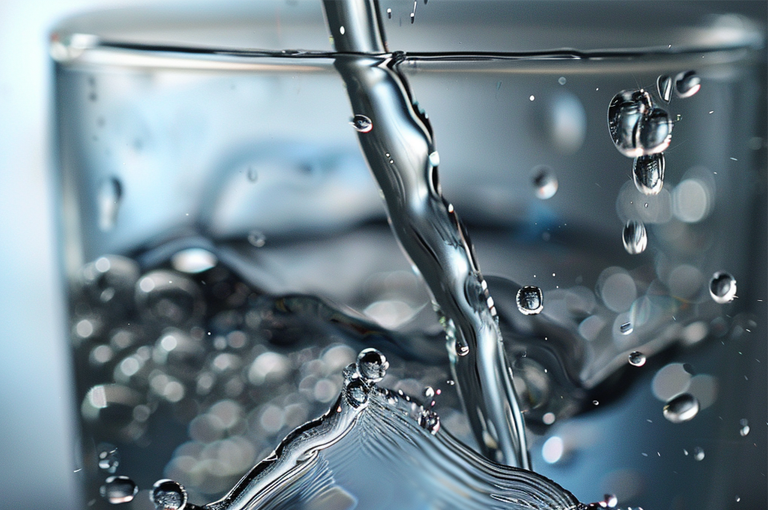
3. How To Treatment ?
To make rainwater potable, it must undergo several treatment steps:
Filtration: Removing large particles and debris.
Sedimentation: Allowing particles to settle out of the water.
Disinfection: Using methods such as chlorination, ultraviolet (UV) light, or ozone treatment to kill pathogens.
Additional Filtration: Using activated carbon filters to remove chemical contaminants and improve taste.
Benefits of Reusing Rainwater
| Benefit | Description |
|---|---|
| Water Conservation | Reducing reliance on municipal water supplies. |
| Cost Savings | Lowering water bills and reducing infrastructure costs. |
| Environmental Protection | Decreasing runoff and erosion, protecting natural waterways. |
| Sustainability | Supporting sustainable water management practices. |
Roof Drainage Systems
| Feature | Description |
|---|---|
| Structural Protection | Protect your building’s structure and foundation from water damage. |
| Safety Enhancement | Enhance occupant safety by preventing ice dams and slippery surfaces. |
| Legal Compliance | Comply with building codes to avoid legal issues. |
Siphon Drainage Systems
| Feature | Description |
|---|---|
| High-Efficiency Management | Achieve high-efficiency rainwater management for large and flat roofs. |
| Cost and Space Efficiency | Reduce material and installation costs while saving space. |
| Environmental Support | Support sustainable urban development and reduce environmental impact. |
Rainwater Attenuation Tanks
| Feature | Description |
|---|---|
| Flood Mitigation | Mitigate flooding and manage stormwater runoff effectively. |
| Reduced Burden on Municipal Systems | Reduce the burden on municipal drainage systems. |
| Promotion of Sustainability | Promote sustainable development and efficient water resource management. |
Combined Drainage Systems
| Feature | Description |
|---|---|
| Enhanced Efficiency | Enhance stormwater management efficiency and urban resilience. |
| Controlled Water Release | Prevent water buildup and manage controlled water release. |
Partner with Yude Rain Eco for Advanced Rainwater Management
Ensure Your Building’s Safety and Sustainability with Yude Rain Eco’s Drainage Solutions
Take Action Today with Yude Rain Eco:
Invest in advanced drainage systems with Yude Rain Eco to safeguard your building and contribute to a sustainable future. Our expertise in rainwater harvesting, sustainable water management, and urban infrastructure improvements ensures that your projects are both effective and environmentally friendly.
Let Yude Rain Eco provide you with innovative solutions for rainwater collection, siphon drainage systems, and rainwater attenuation tanks. Ensure your building’s safety, compliance, and sustainability with our expert services.

